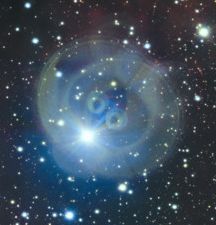Tau.Neutrino said:
ESO’s OmegaCam captures a two billion pixel nebula view
The European Southern Observatory (ESO) has released a staggeringly detailed visible light image of the famous Cat’s Paw and Lobster nebulae, made up of around two billion pixels. Officially called NGC 6334 (Cat’s Paw) and NGC 6357 (Lobster), the nebulae are located in the “tail” of the constellation Scorpius, and represent regions of intense star formation.
More…
More …
> The OmegaCam is mounted aboard the ESO’s Very Large Telescope Survey Telescope (VST) located at the Paranal Observatory, Chile. OmegaCam can observe across a wide wavelength range, and covers a field of view the equivalent of 256 million pixels, allowing the instrument to take images 16 times larger than those captured by the Hubble Space Telescope’s Advanced Camera for Surveys (ACS).
Well, duh. Given that Hubble’s ACS has about the smallest field of view (FOV) of any practical instrument, this isn’t saying much. Note that the VST isn’t the VLT. The VST is a smaller 2.6 m telescope then the VLT (4 off at 8.2 m) but has a bigger field of view. The FOV is 1 × 1 degree, that’s sort of on the boundary between small and large.
For access to large jpeg (977 MB) and other large size images follow links from https://www.eso.org/public/images/eso1705a/
The following 4.3 MB jpeg isn’t full; size, but is large enough to be interesting
“https://cdn.eso.org/images/publicationjpg/eso1705a.jpg”:
The following is a bit too small to be interesting

Science highlights with OmegaCAM
Science goals: very wide surveys in the visible range.
Surveys performed by OmegaCam on the VST.
Young stars cooking in the Prawn Nebula (eso1340).
The most detailed picture ever taken of NGC 253 — a starburst galaxy (eso1152).
A 16 000 pixel-wide, zoomable image of the Lagoon Nebula is imaged by VPHAS+ — one of three imaging surveys with VST using visible light (eso1403).
List of the scientific papers produced by OmegaCAM, via the ESO library’s telbib database. .

